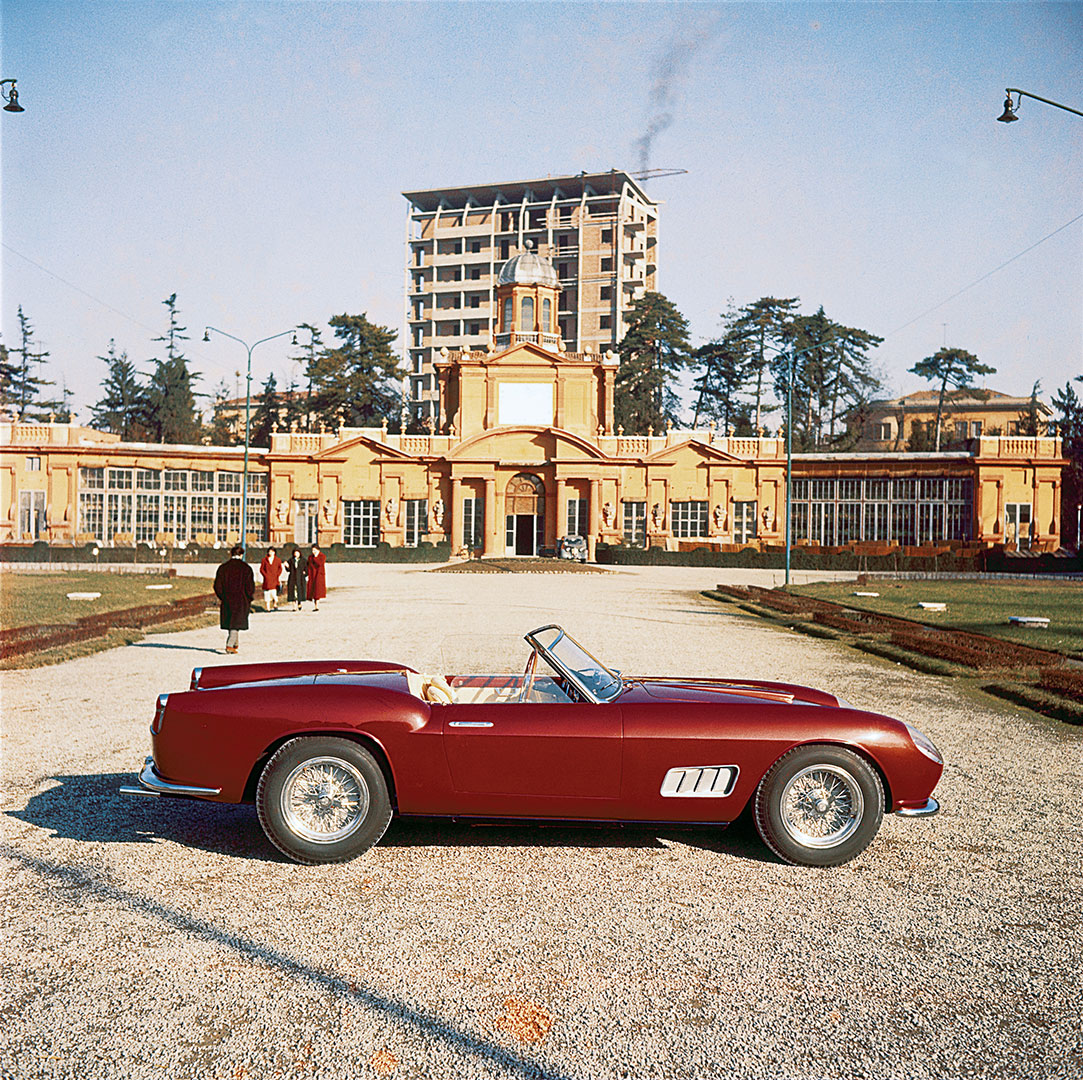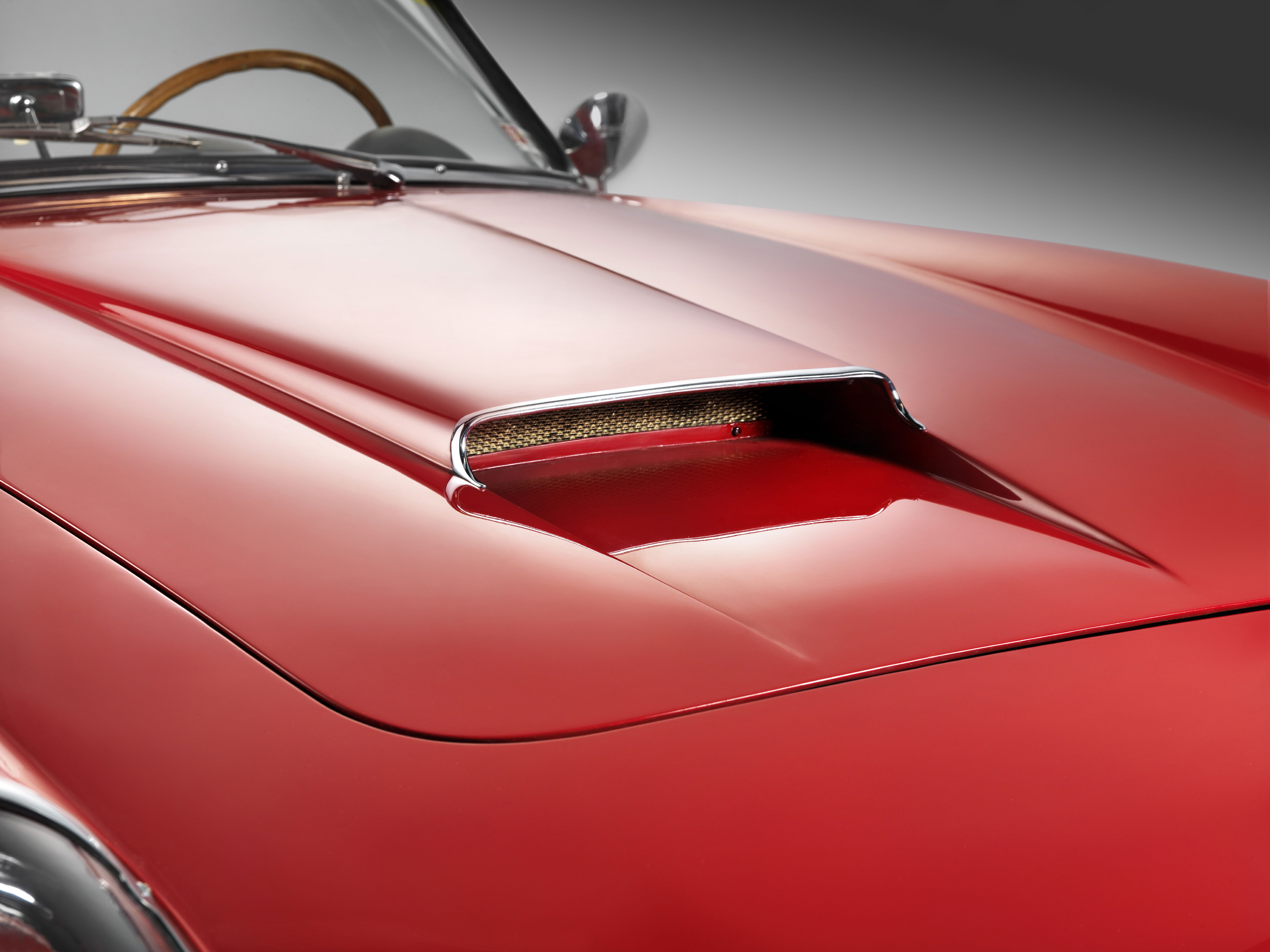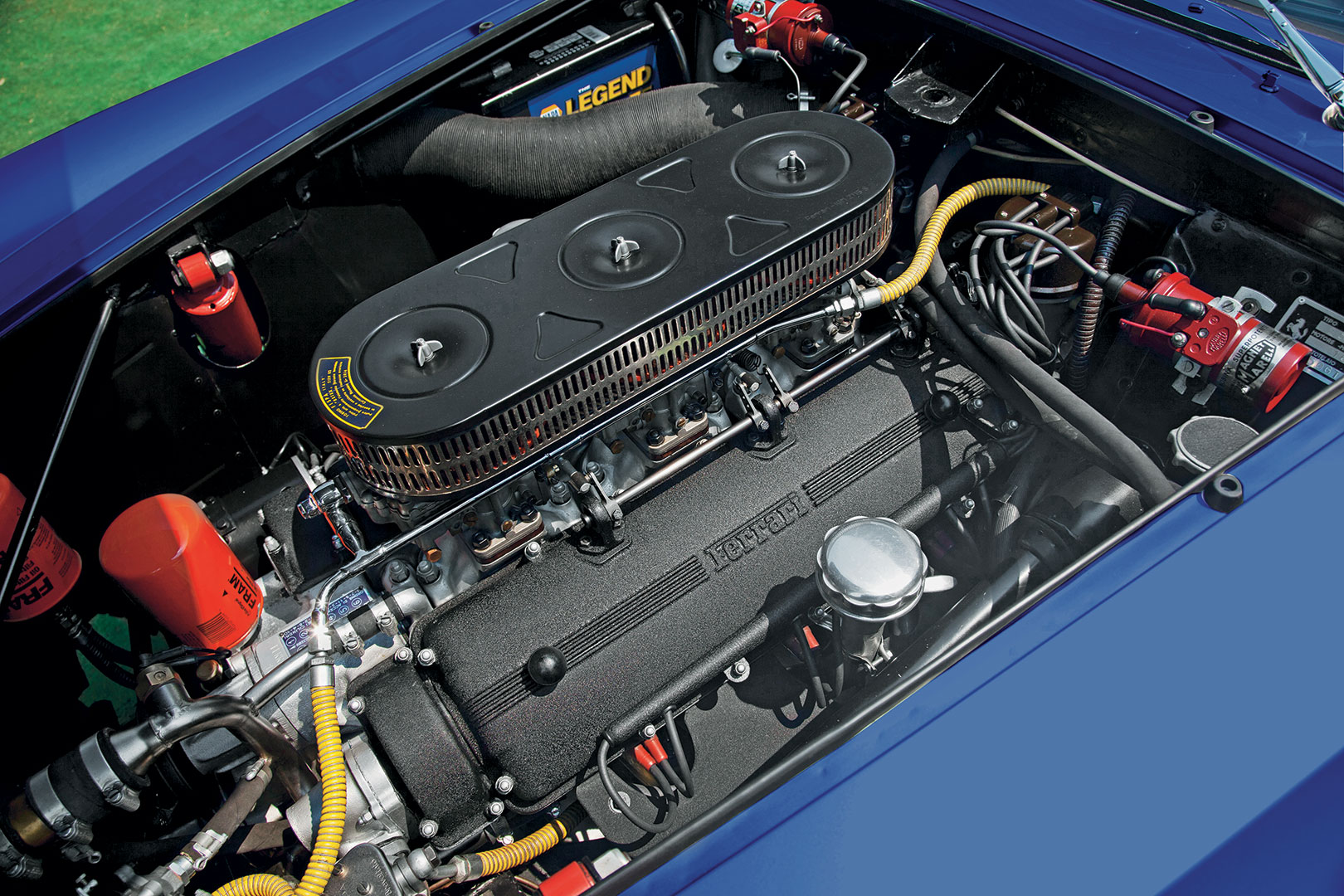?width=768&height=1024)
Ferrari 250 California
Thanks to Ferrari’s reputation in motor sports, and the work of importer Luigi Chinetti, the United States became an important market. John Von Neumann, the west coast representative, thought that there was potential for an open Spider suited to the Californian sun, a sort of open 250 GT Berlinetta.

The history
Chinetti welcomed the proposal and convinced Enzo Ferrari that it was a good idea. Scaglietti was therefore given the opportunity to create this now almost legendary car, building 106 of them, nine with aluminium bodies.
The term ‘spider’ in the model name is something of an anomaly, as the California is really a cabriolet or convertible, with a full folding hood. However, it was in effect an open-top version of the 250 GT Berlinetta alongside which it was produced. Thus, the term spider differentiated it from the concurrently produced 250 GT cabriolets, which were allied to the road-going 250 GT coupés. With two open cars in the production model line-up, it can be seen that open cars were in vogue at the end of the fifties. This model was constructed in two distinct series: the ‘LWB’ (long wheelbase) between 1958 and 1960, although a prototype was built in late 1957, and the ‘SWB’ (short wheelbase) from 1960 to 1962. The latter example wasn’t actually completed until early 1963, with sub-divisions relative to body and mechanical details. A removable hard-top was available for both series.

Constructed by Scaglietti in Modena, most of the cars were in steel with aluminium opening panels, with a few being entirely in aluminium. The ‘LWB’ models were built on a 2600 mm wheelbase chassis, which had factory reference number 508C, and then 508D, as on the ‘TdF’ berlinettas. All were numbered in the odd chassis number road car sequence carrying a ‘GT’ suffix, generally constructed along the same lines as those of the concurrent berlinettas, as were the mechanical components, like suspension, brakes, and steering, with all examples produced being left-hand drive.
Visually, the early cars in the series were virtually pure berlinetta body in style from the waist down, only the windscreen, folding canvas roof, boot line, and door handles being different. During the production run of the ‘LWB’ model some changes were made in body details, like the shape and design of the front wing engine bay exhaust air vents, and more noticeably the rear wing line and lights, boot, and tail profile, which received a step in the panel projecting beyond the base of the lid on late series cars.
Some examples were provided with covered headlights, and others with open units, the choice being in the client’s hands, apart from cars sold in Italy in 1959, where legislation at that time dictated open headlights. The very last cars in the series, produced in late 1959 and early 1960, were fitted with disc brakes to all four wheels, instead of the drum brake set-up of the earlier examples.


The engine
The majority of ‘LWB’ cars had the single overhead camshaft per bank 3 litre V12 engine, with factory type references 128C and 128D, and a capacity of 2953 cc, with a bore and stroke of 73 mm x 58.8 mm, with spark plugs inside the vee of the block, to the same basic specification as the concurrent berlinettas. The early examples were fitted with a single coil and distributor ignition system, later replaced by a twin coil and distributor arrangement, to produce a claimed 260 bhp.
The late series production ‘LWB’ examples and early ’SWB’ series cars were fitted with the outside spark plug 3-litre V12 type 128 DF and 128 F engines, with twin coil and distributor ignition systems and larger carburettors. The later ’SWB’ models were fitted with further developments of the 3-litre V12 engine, which were given the factory reference numbers 168 and then 168/61. These were also outside spark plug variants, with a twin coil and distributor ignition system layout. Within these general parameters certain engines received special treatment, with different camshafts, valve sizes, and carburettor set-ups, to boost the power output for competition use. The transmission was as that fitted to the concurrent ‘LWB’ and ’SWB’ berlinetta series.


The chassis
The bodies of the ‘SWB’ series of cars were very similar to those of the outgoing ‘LWB’ version, but were mounted on a new 2400 mm wheelbase chassis, that initially had factory reference number 539, and then 539/61, as on the concurrently produced ‘SWB’ berlinettas. The new chassis reduced the overall height of the car by 30 mm; although barely discernible, it gave the car a squatter appearance than the earlier versions, but they are still difficult to tell apart. The early ’LWB’ models are easy to recognise because of their rear light units, which are as those fitted to the 250 GT berlinettas of the period, and their flush mounted door handles. The easiest way to distinguish a late ’LWB’ from an ’SWB’ is in the design of the bonnet air intake, which on an ’LWB’ is proud of the bonnet line, whilst on the ’SWB’ it rises from a depression in the bonnet line.
The exhaust air outlet design on the front wings is also different: the ’LWB’ has three vertical raised strips and the ’SWB’ only two. As with the earlier ’LWB’ variant, all ’SWB’ examples were numbered in the odd chassis number road car sequence carrying a ’GT’ suffix. They were all were left-hand drive, with the exception of one car, and were fitted with four wheel disc brakes. As noted relative to the engines, certain examples of both long and short wheel base cars had competition careers, probably due to a driver’s preference for an open GT car over a closed one, but maybe also to promote the model by use in competition. The American driver Bob Grossman was one of the most successful exponents in a 250 GT California in competition, with a fifth overall at Le Mans in 1959 partnered by Fernand Tavano, in ‘LWB chassis 1451 GT. He also had numerous good results in national races in the USA during 1959 and 1960 in this car.

- V12ENGINE
- 2953.21 ccTOTAL DISPLACEMENT
- 176 kWMAXIMUM POWER @ 7000 rpm
- 252 km/hTOP SPEED
- Typefront, longitudinal 60° V12
- Bore/stroke73 x 58.8mm
- Unitary displacement246.10cc
- Total displacement2953.21cc
- Compression ratio8.5 : 1
- Maximum power176 kW (240 hp) at 7000 rpm
- Power per litre81hp/l
- Maximum torque-
- Valve actuationsingle overhead camshaft per bank, two valves per cylinder
- Fuel feedthree Weber 36 DCL carburettors
- Ignitionsingle spark plug per cylinder, two coils
- Lubricationwet sump
- Clutchtwin-plate
- Frametubular steel
- Front suspensionindependent, unequal-length wishbones, coil springs,hydraulic shock absorbers
- Rear suspensionlive axle, semi-elliptic springs, hydraulic shock absorbers
- Brakesdrums
- Transmission4-speed + reverse
- Steeringworm and sector
- Fuel tankcapacity 100litres
- Front tyres6.00 x 16
- Rear tyres6.00 x 16
- Typetwo-seater spider
- Length-
- Width-
- Height-
- Wheelbase2600mm
- Front track1354mm
- Rear track1349mm
- Weight1100kg (dry)
- Top speed252km/h
- Acceleration 0-100 km/h-
- 0-400 m-
- 0-1000 m-
- history
- engine
- chassis
- Technical Details